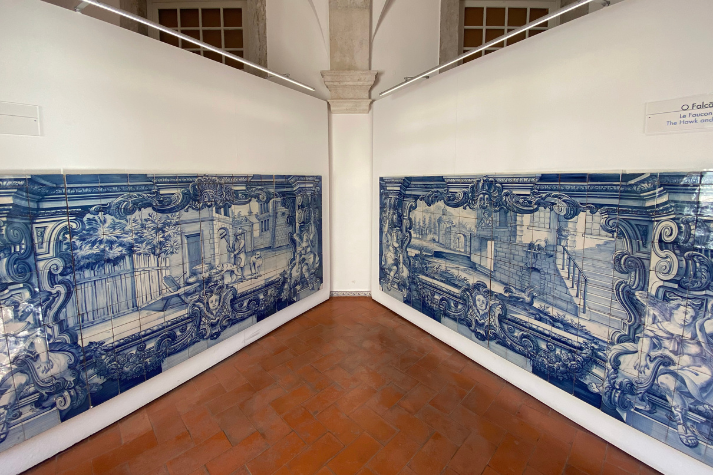Permanent Exhibitions
The Lisbon Church and
the Patriarchs
The Patriarchate of Lisbon was founded in 1716, during the sumptuous reign of D. João V. This exhibition presents the whole context of its creation, as well as the history of the Lisbon Church and its patriarchs, integrated in a Sacred Art display.


2000 Years of History
Between the 12th and 18th centuries there was next to the monastery’s estate, a dump, where more recently an archaeological campaign was carried out. Part of the artifacts found there are today present in this exhibition, that diplays several of the daily life objects used by the community.
Fables of La Fontaine
From the 18th until 20th century the arcades of the cloisters were closed. In order to decorate them, it was commissioned 38 glazed tile panels, each one of them had represented the fables written by Jean de La Fontaine. When the cloisters were reopened, the respective panels were removed, restored and put together on display. The choice of this theme for the decoration of the monastery is still unknown.


Gallery of the Patriarchs
The Patriarchate of Lisbon was founded in 1716 and since then, there were 18 Patriarchs. In this gallery it is possible to admire their portraits, with frames displaying their coats of arms.
Consolado Macedo's Collection
Maria Cândida Consolado Macedo was a researcher who contributed much to the study of Portuguese seashells. The exhibition is the result of her work, where it is possible to find a display of seashells with various sizes, colours and shapes, which were collected directly by her or through dredging, mainly in Portugal.

Previous Exhibitions

"Looks crossed,
words sensed"
De 17/09/2020 a 17/01/2021
João Alvim focused on the discreet figures of the 3rd plan of “Saint Vincent Panels” by Nuno Gonçalves and painted their faces individually, discovering and revealing unexpected expressions and looks. It raises questions like… What did the painter Nuno Gonçalves wanted to show us? The hidden picture of a complex society, a country in debt, with strong social tensions and divergent interests? What does the alienation of the characters and their looks mean?
